Prices in AUD. Shipping worldwide. Flat rate $8 postage per order within Australia. International by weight calculated at checkout. Read full terms.
-
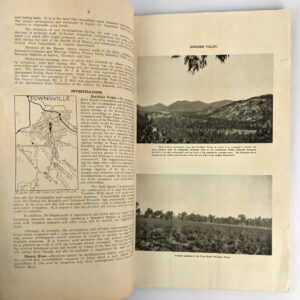
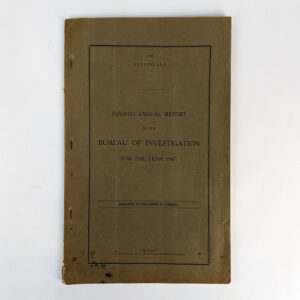
Fourth Annual Report of the Bureau of Investigation Under The Land and Water Resources Development Acts, 1943 to 1946 (for the Year 1947)
AU$80.00 Read MoreAdd to cartJ. R. Kemp
Brisbane: A. H. Tucker, Government Printer, 1948.Results of surveys and investigations of land and water resources in Queensland. Illustrated throughout with photographs and maps.
-
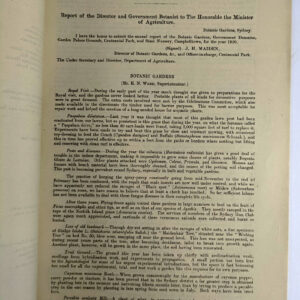
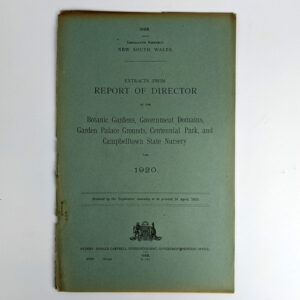
Extracts from Report of Director of the Botanic Gardens, Government Domains, Garden Palace Grounds, Centennial Park, and Cambelltown State Nursery for 1920
AU$150.00 Read MoreAdd to cartJ. H. Maiden
Sydney: Donald Campbell, Government Printer, 1922.NSW Government Report by Joseph Henry Maiden. Appointed Government Botanist and Director of the Botanic Gardens in 1896 and from that date produced voluminous reports most years throughout his tenure. A talented and enthusiastic botanist Maiden immediately set to work establishing the colony’s first herbarium, the National Herbarium of New South Wales, together with a museum and library. He was also responsible for the construction of Sydney’s first playground and worked tirelessly to develop the educational value of the Botanical Gardens for all Australians. His reports provide detailed insight into such endeavours, as well as the year on year goings on of the gardens in the late 19th and early 20th century, with its developments and challenges, from the growth and maintenance of the grounds, to projects, staff, botanical samples and seed exchanges, botanical and library acquisitions, and more. This extract provides a glimpse into the gardens in 1920 and includes 8 large photographs of trees.
-
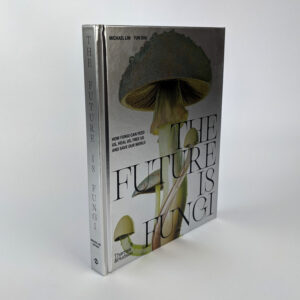
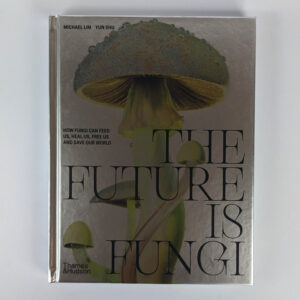
The Future is Fungi
AU$50.00 Read MoreAdd to cartMichael Lim; Yun Shu
London: Thames & Hudson, 2022.How Fungi Can Feed Us, Heal Us, Free Us and Save Our World. “The kingdom of fungi has survived all five major extinction events. They are the architects of the natural world, integral to all life. They sustain critical ecosystems, recycling nutrients and connecting plants across vast areas, and help to produce many staples of modern life, such as wine, chocolate, bread, detergent and penicillin. Today, in the face of urgent ecological, societal and spiritual crises, fungi are being engineered to grow meat alternatives, create new sources of medicine, produce sustainable biomaterials, remediate the environment and even expand our collective consciousness. The Future is Fungi is a complete introduction to this hidden kingdom. Exploring their past, present and potential future impact in four key areas – food, medicine, psychedelics and mental health, and environmental remediation – this book not only reveals how fungi have formed the foundations of modern life but how they might help shape our future. Rich with informative texts, awe-inspiring 3D digital art and tips on how to immerse yourself in the world of fungi, this is a manifesto for the future, an invitation into a deeper awareness of our relationship with the natural world, each other, and ourselves.” (publisher’s blurb)
-
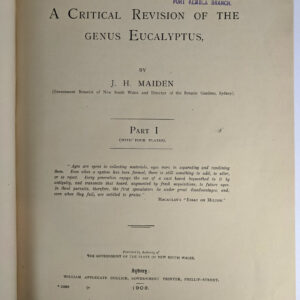
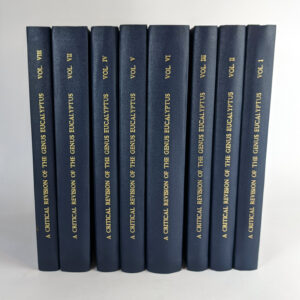
A Critical Revision of the Genus Eucalyptus (75 Parts in 8 Volumes)
AU$4,500.00 Read MoreAdd to cartJ. H. Maiden; Margaret Flockton
Sydney: William Applegate Gullick, John Spence, and Adam James Kent, Government Printers, 1903-1931.A complete set, being 75 parts in 8 volumes, containing over 3000 pages and 304 plates, 12 of which are in colour, and 4 of which are maps, of Joseph Henry Maidens masterpiece in the field of botanical research, and his major taxonomical work alongside his Forest Flora of New South Wales. The set is illustrated chiefly with lithographs by Margaret Flockton, together with several by Matilda Smith, a facsimile of L’Heritier, and 4 maps, as well as a photographic illustration by L. C. Webster, and a photographic portrait of Maiden in one of the posthumous volumes therein also published an obituary by Richard Hind Cambage. The project, which took 28 years to be published, the final parts prepared by Maiden before his death in 1925 and published posthumously edited by Cambage and William Blakely, was an extension of the work started by Ferdinand von Mueller and George Bentham in Flora Australiensis and continued by Mueller in his Eucalyptographia, devising classifications based on the characteristics of the stamens, and remained an important reference for many years. Maidens study of eucalyptus was completed alongside his duties as Government Botanist and Director of the Botanic Gardens, which he commenced in 1896. A talented and enthusiastic botanist Maiden established the colony’s first herbarium, the National Herbarium of New South Wales, together with a museum and library. Among his many studies and achievements he was also responsible for the construction of Sydneys first playground and worked tirelessly to develop the educational value of the Botanical Gardens for all Australians.
-
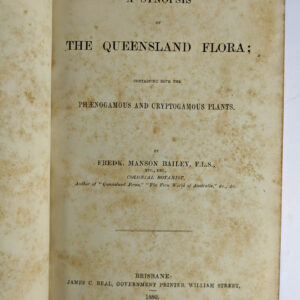
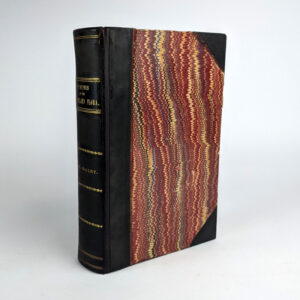
A Synopsis of the Queensland Flora; Containing both the Phaenogamous and Cryptogamous Plants
AU$300.00 Read MoreAdd to cartFredk. Manson Bailey
Brisbane: James C. Beal, Government Printer, 1883.A thorough catalogue of short descriptions for the identification of plants found in the colony of Queensland. FERGUSON 6498a.
-
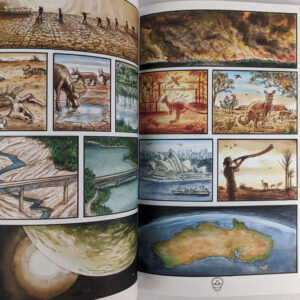
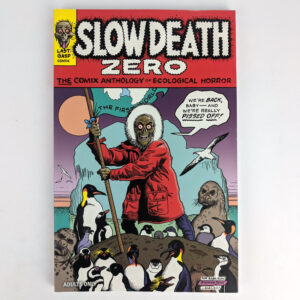
Slow Death Zero
AU$35.00 Read MoreAdd to cartJon B. Cooke; Ronald E. Turner
San Francisco: Last Gasp, 2021.“Slow Death Zero is a revival of the legendary underground horror comix anthology, Slow Death. This one-shot 50th anniversary edition includes all-new comix by 33 writers and artists, with one classic reprint by R. Crumb, 28 stories and pin-ups to chill the bones in our temperature-rising age of global warming. Inspired by the ecological advocacy of the original title, which debuted on the very first Earth Day in 1970, this edition features horrifying tales depicting the environmental calamity facing our world in this time of climate change. The book is headlined by a savage depiction of the implications of the melting polar ice cap in Antarctica, by award-winning cartoonist/illustrator William Stout, who provides the cover. Also included is work by Richard Corben, Rick Veitch, Drew Friedman, Bryan Talbot, Hunt Emerson, Peter Kuper, and many more, as well as unseen work by the late, great Greg Irons. This is a wild and outrageous collection of environmental-themed horror stories, a fat compilation by the most diverse team of Slow Death contributors ever assembled!” Edited by Jon B. Cooke and Ronald E. Turner.
-
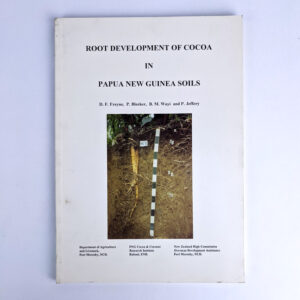
Root Development of Cocoa in Papua New Guinea Soils
AU$80.00 Read MoreAdd to cartD. F. Freyne; P. Bleeker; B. M. Wayi; P. Jeffery
Brisbane: Freyne Consulting, 1996.Technical report of research by the Land Utilisation Section, Department of Agriculture and Livestock. Write up commissioned by the Governments of Papua New Guinea and New Zealand. Scarce, 2 copies in OCLC at July, 2021, at the University of Adelaide and Wageningen University, Netherlands.
-
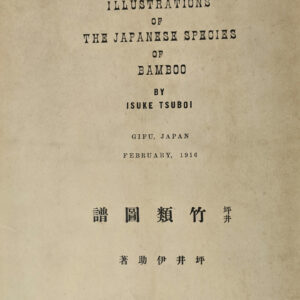
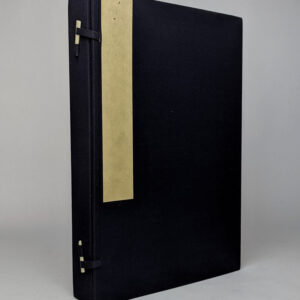
Illustrations of the Japanese Species of Bamboo
AU$1,850.00 Read MoreAdd to cartIsuke Tsuboi
Gifu and Tokyo: Kawada Teijiro and Hatsubaijo Maruzen Kabushiki Kaisha, 1916.The Tsuboi Bamboo Atlas comprises 109 loose colour lithographs of Japanese bamboo varieties with an English title page and index together with an 80 page book in Japanese. Presents examples of root systems, stems, with and without flowers and leaves, cross-sections, abnormalities, and fungus, at various scales, with Japanese and Latin titles, and English captions.
-
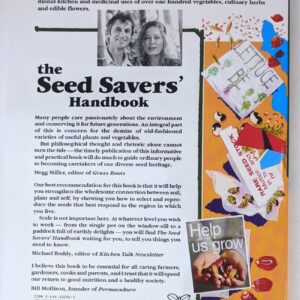
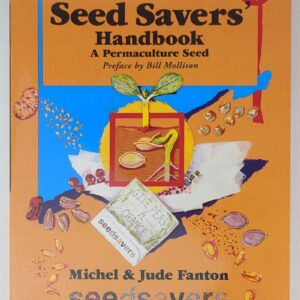
The Seed Savers’ Handbook: A Permaculture Seed
AU$30.00 Read MoreAdd to cartMichel Fanton; Jude Fanton
Byron Bay: The Seed Savers’ Network, 2020.“The book begins with eight chapters on the issues around seeds globally and the practicalities of saving your own seeds. Three quarters of the book is on 117 food plants, mostly vegetables, with the remainder culinary flowers, herbs and spices. Each plant has a description, its wild origins, how to cultivate it, save its seeds or otherwise propagate it, storage of the seed and its medicinal and culinary uses. Permaculture, biodiversity, organics and companion planting are the principles that underlie the contents of this book. This has been a reliable reference book not just on propagating and breeding your own vegetables, but also for how to grow and use both common (corn, tomatoes, beans, cabbages, etc.,) and unusual vegetables, such as tumeric, peanuts and several species of gourds. Included are many Asian and South American vegetables, herbs and spices.” (publisher’s blurb) Illustrated by Alfredo Bonanno. Preface by Bill Mollison.
-
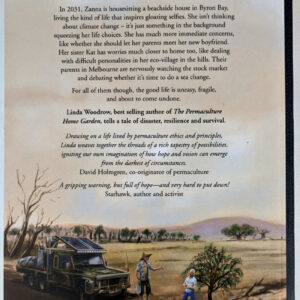
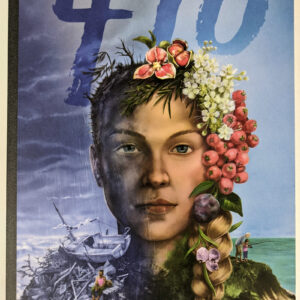
470
AU$27.00 Read MoreAdd to cartLinda Woodrow
Hepburn: Melliodora, 2020.“In the 2030s, as the world spirals into ecological and economic meltdown, three generations of an Australian family must find a way to each other, and then a way to survive and make a good life. What will it be like, to live in a climate changed world? Meticulously researched, 470 explores the nature of resilience when the world suddenly tips.” (publisher’s blurb)
-
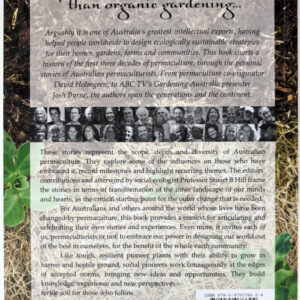
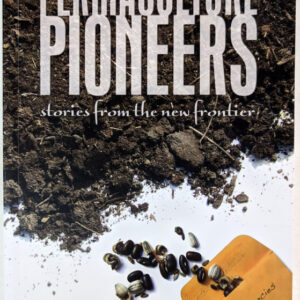
Permaculture Pioneers: Stories from the New Frontier
AU$25.00 Read MoreAdd to cartKerry Dawborn; Caroline Smith
Hepburn: Melliodora, 2011.“Arguably permaculture is one of Australia’s greatest intellectual exports, having helped people worldwide to design ecologically sustainable strategies for their homes, gardens, farms and communities. Permaculture Pioneers explores social and inner change for sustainability, charting a history of the first three decades of permaculture, through the personal stories of Australian permaculturists. From permaculture co-originator David Holmgren, to ABC Gardening Australia presenter Josh Byrne, the authors span the generations and the continent.” (publisher’s blurb)
-
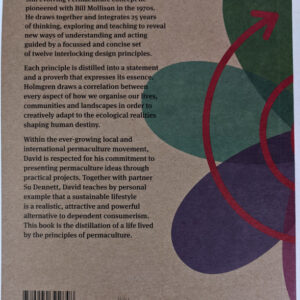
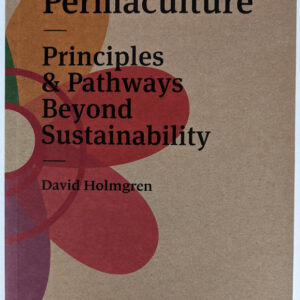
Permaculture: Principles & Pathways Beyond Sustainability
AU$50.00 Read MoreAdd to cartDavid Holmgren
Hepburn: Melliodora, 2017.“Holmgren’s seminal work, drawing together and integrating 25 years of thinking and teaching to show a whole new way of understanding and action behind a simple set of design principles. Essential reading for permaculture designers and accessible to a wide range of critical thinkers. This 2017 revised edition is more accessible than the original, with redrawn graphics, corrected and amended text, new references and a newly designed layout that invites the reader into the world of whole systems thinking that is permaculture.” (publisher’s blurb)
-
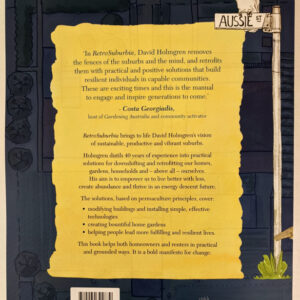
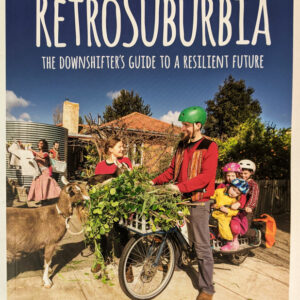
RetroSuburbia: The Downshifter’s Guide to a Resilient Future
AU$90.00 Read MoreAdd to cartDavid Holmgren
Hepburn: Melliodora, 2020.“This 592 page manual shows how Australians can downshift and retrofit their homes, gardens, communities and, above all, themselves to be more self-organised, sustainable and resilient into an uncertain future. It promises a challenging but exciting mix of satisfying work, a more meaningful way of living and hope for the next generation. RetroSuburbia is divided into three main sections: the Built, the Biological and the Behavioural along with the introductory section ‘Setting the scene’.” (publisher’s blurb)
-
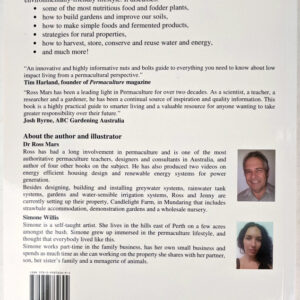
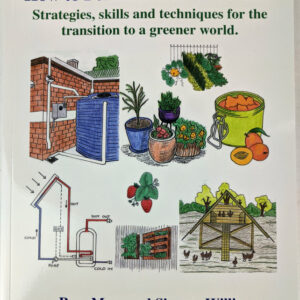
How To Permaculture Your Life: Strategies, skills and techniques for the transition to a greener world
AU$33.00 Read MoreAdd to cartRoss Mars; Simone Willis
Perth: Candlelight Trust, 2015.“Caught between climate change and a fossil fuel-driven economy that demands ever more growth, the world faces a great transition — by design or disaster — away from fossil fuels to a less energy intensive future. What proven tools are available to aid in making a successful, deliberate transition to a resilient, sustainable future? How to Permaculture Your Life is a resource book for everyone interested in Transition, permaculture and more self-reliant and satisfying lifestyles. This book is packed with information on permaculture design principles, soil building, nutrient’dense food growing, including top plant and tree selections for all climatic zones.” (publisher’s blurb)
-

Permaculture: A Designers’ Manual
AU$140.00 Read MoreAdd to cartBill Mollison
Sisters Creek: Tagari Publications, 2016.This is the definitive Permaculture design manual in print since 1988. It is the textbook and curriculum for the 72-hour Certificate course in Permaculture Design. Written for teachers, students and designers, it follows on and greatly enlarges on the initial introductory texts, Permaculture One (1978) and Permaculture Two (1979) both of which are still in demand. Very little of the material found in this book is reproduced from the former texts. It covers design methodologies and strategies for both urban and rural applications, describing property design and natural farming techniques. Features discussion on Designers’ Manual, Design methods, Understanding patterns, The Humid Tropics, Dryland Strategies, Humid Cool to Cold Climates.
-
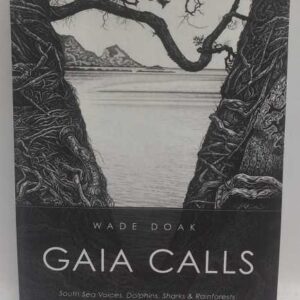
Gaia Calls: South Sea Voices, Dolphins, Sharks & Rainforests
AU$10.00 Read MoreAdd to cartWade Doak
Studio City: Divine Arts, 2012.
